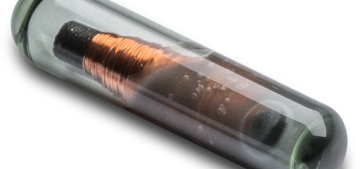PIT Tags Last Life Of Animal – No Battery
The use of Passive Integrated Transponder (PIT) tags in wildlife research, conservation, and animal management represents a pivotal advancement in the non-invasive tracking and identification of individual animals. One of the most remarkable features of PIT tags is that they do not contain a battery and can last for the lifetime of the animal. This blog post delves into the significance of this aspect of PIT tag technology, exploring how it revolutionizes our approach to animal monitoring and data collection.
The Essence of PIT Tag Technology
PIT tags are tiny, electronic chips used for the unique identification of animals. They work on the principle of Radio-Frequency Identification (RFID) technology. When a PIT tag comes into the proximity of a reader device, the electromagnetic field generated by the reader activates the tag, enabling it to transmit its unique identification code back to the reader. This interaction facilitates the seamless tracking and data collection of tagged animals without the need for direct contact or visual identification.
Advantages of Battery-Free Operation
Longevity and Reliability: The fact that PIT tags do not require a battery is a cornerstone of their value in research and conservation efforts. This design ensures that the tags can last for the lifetime of the animal, providing a reliable means of identification from the moment of tagging until the end of the animal’s life. This longevity is crucial for long-term studies, allowing researchers to gather consistent data over extensive periods without the need for re-tagging or replacing batteries.
Safety and Welfare: Battery-free PIT tags are incredibly small and lightweight, making them suitable for use in a wide range of species, from tiny fish to large mammals. The absence of a battery minimizes the size and weight of the tag, reducing the potential for discomfort or harm to the animal. This contributes significantly to the welfare of tagged animals, ensuring that the research does not adversely affect their well-being or natural behaviors.
Cost-Effectiveness: The durability and lifetime functionality of PIT tags make them a cost-effective solution for animal monitoring projects. The initial investment in tagging is maximized over the life of the animal, eliminating the need for costly battery replacements or tag maintenance. This efficiency makes PIT tagging an accessible and sustainable option for projects of all scales, from small-scale studies to large, multi-species conservation programs.

Expanding the Possibilities of Wildlife Research
Environmental Considerations: With environmental conservation being a priority in wildlife research, the battery-free nature of PIT tags also stands out as an environmentally friendly option. Unlike battery-powered devices, which can pose disposal and pollution challenges, PIT tags are inert and have minimal environmental impact. This aligns with the ethical and ecological considerations essential to conservation work.
The use of PIT tags extends beyond basic identification; it enables detailed monitoring of movement patterns, social behaviors, survival rates, and habitat use. The ability to gather data over an animal’s lifetime opens up new avenues for understanding life histories, population dynamics, and ecological interactions. Furthermore, the non-intrusive nature of PIT tagging allows for the study of animals in their natural habitats, providing insights that are vital for effective conservation strategies and management policies.
Conclusion
The battery-free, lifelong functionality of PIT tags offers a blend of reliability, safety, cost-effectiveness, and environmental sustainability, making it a revolutionary tool in the field of animal research and conservation. As we continue to seek ways to study and protect our planet’s diverse species, the importance of such technologies cannot be overstated. PIT tags not only facilitate a deeper understanding of the natural world but also embody the principles of ethical and responsible research.








Add comment